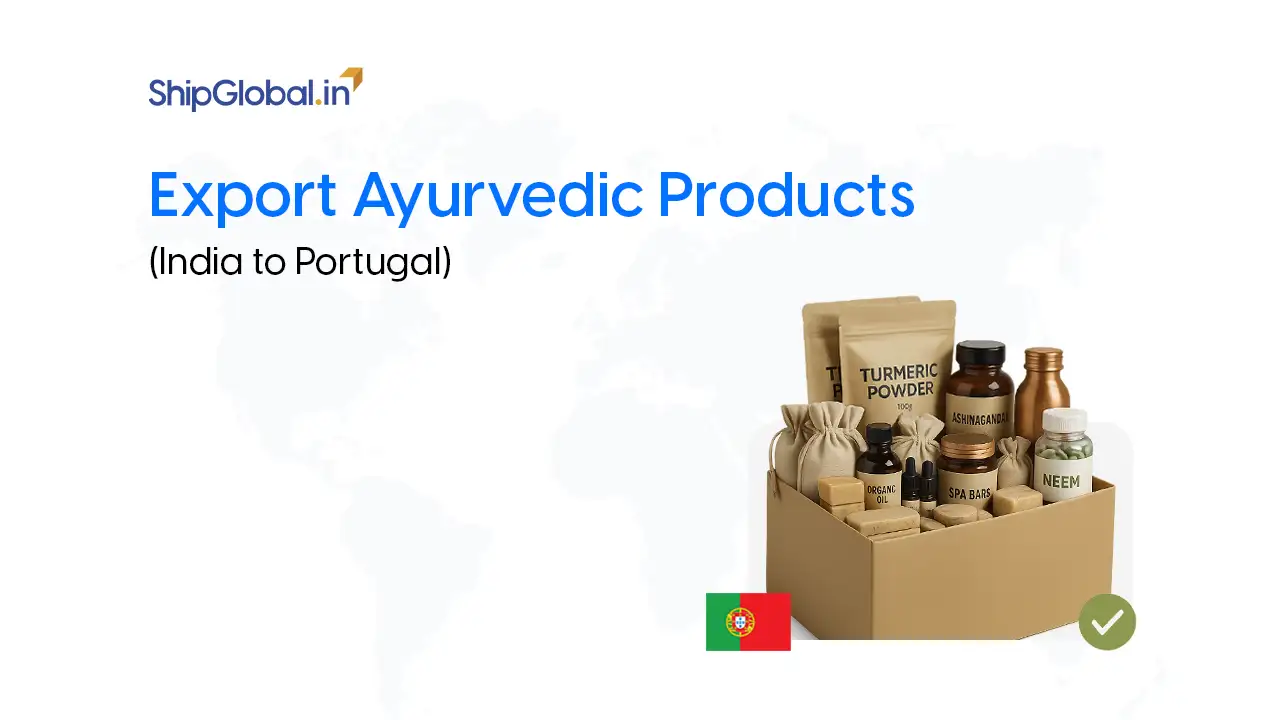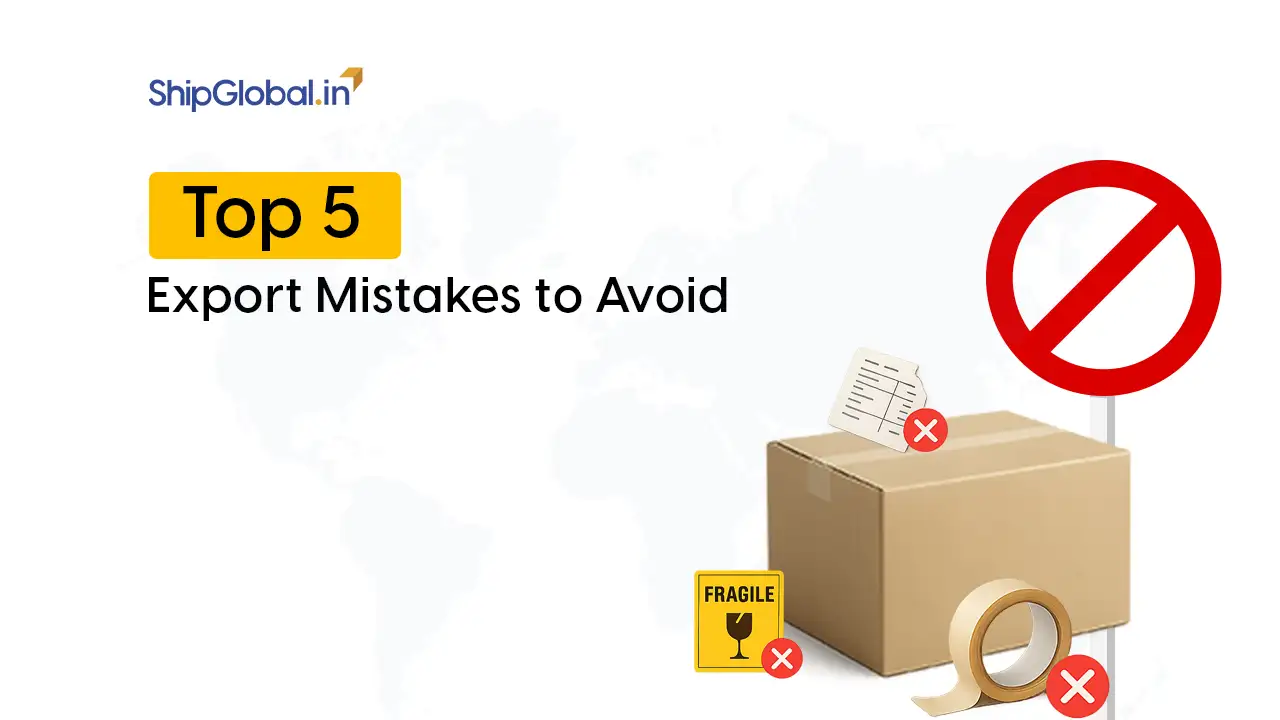India is home to one of the world’s richest traditions of handicrafts. From intricate wooden carvings and metalware to textiles, ceramics, and jewelry, Indian artisans produce goods that are globally admired for their craftsmanship and cultural depth. With European consumers increasingly drawn to sustainable, authentic, and artisanal products, export handicrafts India to Portugal presents a strong opportunity for Indian exporters.
However, exporting into the European Union (EU) is not a casual process. When you plan to export handicrafts India to Portugal, you must comply with strict EU regulations, ensure your documentation is complete, and navigate customs and taxation carefully. The goal is not only to ship your goods but to do so legally, safely, and profitably.
This guide provides an in-depth overview of how to successfully export handicrafts from India to Portugal, covering regulations, documentation, logistics, and market access strategies.
Why Portugal is an Attractive Market for Indian Handicrafts
Portugal may not be as large an economy as Germany, France, or Spain, but it has certain characteristics that make it highly receptive to Indian handicrafts:
- Cultural affinity for artisanal products – Portuguese consumers appreciate authenticity, handmade value, and cultural richness, which align perfectly with Indian handicrafts.
- Tourism-driven retail market – Millions of tourists visit Lisbon, Porto, and other Portuguese cities every year, and many buy handicrafts and artisanal souvenirs. This increases the resale potential of Indian handicrafts.
- Niche but growing demand – Portuguese retailers are increasingly sourcing eco-friendly, sustainable, and fair-trade handicrafts to serve ethically conscious customers.
- EU gateway advantage – Once handicrafts enter Portugal, they can move freely across the European Union without additional customs duties, making it an entry point into the wider European market.
For an Indian exporter, these factors make Portugal both a direct market and a springboard into broader EU distribution.
Step 1: Legal Requirements to Export Handicrafts India to Portugal
The first and most critical step in planning to export handicrafts India to Portugal is understanding EU regulations. These are designed to protect consumers, preserve cultural heritage, and ensure environmental sustainability.
CITES-Controlled Materials
If your handicrafts contain ivory, tortoiseshell, coral, or other materials listed under the Convention on International Trade in Endangered Species of Wild Fauna and Flora (CITES), you cannot export them freely.
- You will require a CITES export permit from Indian authorities.
- The EU applies strict rules even to “worked specimens,” which include items made from restricted materials, whether they are new or antique.
- For example, coral jewelry is a popular Indian handicraft, but exporting it to Portugal requires CITES compliance. Many importers specifically search for terms like “CITES permit for coral jewellery handicrafts to EU” to clarify requirements.
EU Cultural Goods Regulation (2019/880)
Handicrafts that are also considered cultural goods such as antiques, religious artefacts, or items with historical significance are regulated under EU Regulation 2019/880.
- Cultural items older than 250 years may require an import licence before they can be brought into Portugal.
- For other items, an importer statement may be required to confirm legal export from India.
This regulation aims to combat the illicit trade of cultural property. Exporters should carefully assess whether their goods qualify under these categories before shipment.
Wooden Handicrafts and EUDR Compliance
Wooden handicrafts are among the most common exports from India. However, the EU has introduced the European Union Deforestation Regulation (EUDR), which requires all wood products to be proven as deforestation-free.
- Exporters must provide documentation showing the geographic origin of the wood.
- A due diligence system must be followed to ensure compliance.
- Retailers in Europe increasingly demand evidence of sustainable sourcing.
Thus, anyone exporting carved wooden décor, furniture, or similar products should be prepared for EUDR compliance. Many exporters actively research “EUDR compliance wooden handicrafts India to Portugal” for guidance.
General Product Safety and CE Marking
The General Product Safety Regulation (GPSR) applies to all consumer products sold in the EU.
- Items such as handmade toys must carry CE marking, which confirms that they meet EU safety standards.
- Products such as candles, tableware, or handicrafts with chemical coatings must comply with the REACH Regulation (Registration, Evaluation, Authorisation, and Restriction of Chemicals).
- Non-compliant goods can be seized at customs or withdrawn from the market after arrival.
For example, searches like “CE marking handmade toys EU requirements” help exporters ensure they are not overlooking crucial obligations.
Step 2: Documentation for Export Handicrafts India to Portugal
Documentation is the backbone of successful trade. Missing or incorrect paperwork is one of the most common reasons for delays when you export handicrafts from India to Portugal.
Key documents include:
- Commercial Invoice – A detailed invoice describing the product, quantity, unit price, total value, and buyer information.
- Packing List – Explains how goods are packed, including dimensions, weight, and number of packages.
- HS Code Classification – Every handicraft must be assigned the correct HS code (Harmonized System code). Portugal uses TARIC (the EU customs tariff) to determine the applicable duties. For example, carved wooden boxes and textile handicrafts have different tariff classifications.
- Certificate of Origin – Issued by a Chamber of Commerce in India, this document certifies that the goods were made in India. It can sometimes help qualify for preferential duty rates.
- CITES Permit – Required if the handicraft contains restricted natural materials.
- Import Licence or Importer Statement – If applicable under Cultural Goods Regulation 2019/880.
Working with a customs broker in Portugal is strongly recommended, as they will help you classify products correctly, avoid overpayment of duties, and ensure compliance with EU customs law.
Step 3: Customs Duties, VAT, and Costs for Export Handicrafts India to Portugal
Once your handicrafts arrive in Portugal, they must clear customs. Costs include:
- Customs Duty – Determined by the HS code and the type of handicraft. For example, wooden decorative items may have different duty rates than textile wall hangings.
- Value Added Tax (VAT) – Portugal applies VAT (usually 23%) on imports, calculated on the CIF value (Cost + Insurance + Freight). This means VAT is levied not only on the product value but also on shipping and insurance costs.
- Customs Broker Charges – Most exporters use a broker to manage clearance, which incurs a service fee.
If, for example, you export ₹10,00,000 worth of wooden handicrafts with shipping costs of ₹1,00,000, VAT will be charged on ₹11,00,000, not just the product value. This has a significant impact on pricing and should be factored into negotiations with buyers.
Step 4: Logistics and Shipping for Export Handicrafts India to Portugal
Practical handling of exports is as important as documentation. Handicrafts are often fragile, bulky, or irregularly shaped, which requires careful logistics planning.
- Incoterms (International Commercial Terms) – Decide with your buyer who bears responsibility for shipping and customs. Common terms include:
- FOB (Free on Board): Exporter handles delivery to the port; buyer manages shipping thereafter.
- CIF (Cost, Insurance, and Freight): Exporter pays for shipping until arrival in Portugal.
- DDP (Delivered Duty Paid): Exporter handles the entire process, including customs clearance and taxes.
- FOB (Free on Board): Exporter handles delivery to the port; buyer manages shipping thereafter.
- Packaging – Products should be packed securely but sustainably. European buyers increasingly expect eco-friendly packaging materials.
- Freight Options – Small consignments can be sent by air, but for larger shipments, sea freight is more economical. Choosing an experienced freight forwarder ensures goods are handled properly.
Step 5: Market Entry and Selling in Portugal
Compliance and shipping are only the beginning. To succeed long-term in Portugal, exporters must focus on sales channels and branding.
- Online Marketplaces – Platforms like Etsy, Amazon EU, and eBay Europe allow direct-to-consumer sales.
- Retail Partnerships – Collaborating with Portuguese boutiques, handicraft stores, and cultural outlets helps establish presence in physical retail.
- Trade Fairs – Exhibiting at European trade fairs such as Ambiente in Germany or smaller craft fairs in Lisbon and Porto provides visibility among wholesalers and buyers.
- Storytelling and Branding – Portuguese consumers, like many in Europe, value the story behind the product. Artisans who highlight sustainability, fair-trade practices, and cultural heritage gain a competitive advantage.
Conclusion
The opportunity to export handicrafts from India to Portugal is substantial, but success requires more than just producing beautiful products. Exporters must:
- Understand EU laws regarding CITES, cultural goods, wooden products (EUDR), and consumer product safety.
- Prepare accurate documents such as invoices, HS codes, certificates of origin, and permits.
- Plan for customs duties, VAT, and broker fees in their pricing structure.
- Carefully handle shipping and packaging to preserve product quality.
- Build a strong sales strategy through online marketplaces, retail partnerships, and trade fairs.
With proper planning and compliance, Indian artisans and exporters can unlock Portugal as not just a market but a gateway into Europe, bringing the richness of Indian handicrafts to a wider audience.
FAQs
Handicrafts made with coral, ivory, or tortoiseshell require a CITES export permit from Indian authorities. The EU also enforces strict rules for “worked specimens,” so proper documentation is mandatory.
Yes. Items classified under the EU Cultural Goods Regulation 2019/880 may need an import license or importer statement, especially if they are antiques over 250 years old.
Wooden handicrafts must comply with the EU Deforestation Regulation (EUDR), which requires proof that the wood is deforestation-free and traceable to legally sourced materials.
Yes. Toys and similar items must comply with the General Product Safety Regulation (GPSR) and carry CE marking to show EU compliance. Candles, coatings, or food-contact items may also need to meet REACH chemical safety standards.
VAT is applied to the CIF value (Cost + Insurance + Freight) of the shipment, typically at a rate of23% in Portugal. Customs duties depend on the HS code classification of the product.
For smaller consignments, air freight is fast. For larger shipments, sea freight is more economical. Incoterms like FOB, CIF, and DDP define responsibility for shipping, insurance, and customs clearance.
Options include online marketplaces like Etsy and Amazon EU, partnerships with local boutiques, participation in trade fairs, and emphasizing sustainability and cultural storytelling in your branding.








